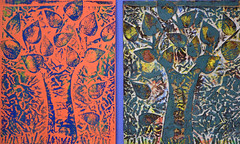What did you do last summer? A pedagogic opportunity
16 September 2011 - 3:24pm
It is September once again and teachers and students are back together once again, sharing common spaces and sharing opportunities to talk about the recent and distant past. What kids might have done last summer is still fresh in their minds, but, perhaps, what they did in school last year is a bit less fresh and bit less accessible.
As a teacher, how might I take advantage of this to help kids to develop and enhance understandings and appreciation of how the many ways history and the past inhabit us and play a key role in shaping our conceptions and perceptions of the present? There are a multitude of opportunities to explore this with students, and here are some suggestions built around some throughline and essential questions...
(Please note that this is hardly exhaustive):
- How does the passage of time change they way we think about and recall events from the past?
- What are there things we remember well?
- What are the properties of memorable things that give them sticking power in our memories?
- Why might we struggle to remember other things?
- How might the difference between what we remember and what we struggle to recall, be a great opportunity to connect our own memories to collective memory?
Find out if students visited places of collective memory like museums, historic sites and monuments or living history museums this past summer. What was the nature of their encounter with the past? You might ask:
- In what ways did the things you saw, heard, touched and smelled impact they way you remember your visit?
- How did this encounter with the past impact what you think of yourself in the present?
- Did your visit or encounter with the past change the way you think about history?
- How might students, individually and as a class, share what they learned and understood from visits or encounters to museums and historic places to enliven class conversations about the past and the present?
- While not all vacations involve visiting historic sites, museums and monuments, how is visiting the past or a monument on vacation different from encountering the past in a classroom or on a field trip?
When I travel with my family or on my own I am always drawn to places of collective memory, and I am always attentive to the ways such places are experienced by adults and by children. What do I want to look at and experience? What do others want to look at? What seems important to visitors and tourists? What seems less interesting and why is that the case? What parts of a museum, historic site or monument are not as visited? Why are some parts of the museum crowded and other parts as quiet as a tomb? What are people talking about when they go to places of collective memory? What stories are being told?
Children’s' experiences are excellent resources for taking up important questions about the place history plays in identity and citizenship. Their perspectives are unique and valuable. Their naïveté allows for questions and insights that escape adults or might seem inappropriate. The potential conversation that could emerge out of the question ‘what did you do last summer?’ might help change the way you and your students learn about and live with the past. First, as teachers, we need to ask students what seems on the surface to be a simple and routine question, and then we need to listen and take advantage of the learning opportunities the kids give us, and run with them.
So, what did YOU do last summer?
[*] For an explanation of throughline questioning please refer to den Heyer, K. (2009). Implicated and called upon: Challenging an educated position of self, others, knowledge and knowing as things to acquire. Critical Literacy: Theories and Practices, 3(1), 26-36.
My use of essential questions draws on Wiggins, G., & McTighe, J. (2005). Understanding by design. Alexandria, VA: Association for Supervision and Curriculum Development.
Image was created by grade 6 Edmonton Public School student "Hayley" and it is was "inspired by the fall leaves falling off a tree onto the grass in the fall." http://www.flickr.com/photos/epsb/6093650183/in/contacts/


